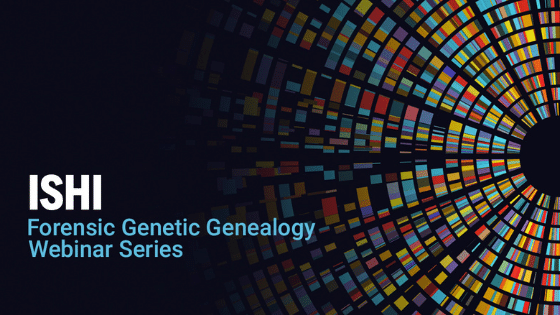For over four decades, the Golden State Killer eluded capture–until 2018, when a revolutionary tool known as forensic genetic genealogy (FGG) unmasked him as 72-year-old Joseph James DeAngelo. Using genome-wide testing to generate a comprehensive DNA profile, FGG helps narrow down a pool of suspects by linking them to relatives who have submitted their own DNA samples for genetic genealogical analysis. Since 2018, FGG has been deployed for lead generation in over 200 suspect cases around the world. This free three-part webinar equips genetic forensics professionals with information about what cases are best suited for FGG, what labs and prosecutors will face when they take these cases to court, and which technologies are best for generating a genetic profile for FGG analysis.

In part one of the series, Steve Busch, a veteran FBI Special Agent, and Steve Kramer, the FBI’s in-house counsel of 20 years covered the fundamentals of forensic genetic genealogy and its rise as a leading method of investigation.
Steve Kramer led off the webinar by discussing the Golden State Killer case and how it led to more cases using FGG as a technique to solve previously unsolvable cases. Ultimately, since the investigation began in 1974, there were 650 detectives working on the case from 15 different law enforcement agencies (including the FBI) that spent 200,000 man hours and over $10,000,000 of tax payer money to solve the case. The original suspect list had over 8,000 people on it, with ~300 people being swabbed for DNA. All of this led to 0 suspects being discovered as the GSK. In comparison, using FGG, a team of 6 people spent $217 and 63 days to uncover Joseph DeAngelo as the GSK.
Next, Steve Busch described the five main steps to the process of using FGG, while making it clear that throughout this process it’s imperative for investigators to balance solving cases with protecting the technique. The first step is to start by identifying the right cases. He says that while many detectives have a certain case in mind that they’d like to solve, he urges investigators to think more broadly about what types of cases that could potentially be solved that fall under the policy of the DOJ umbrella of homicide, sexual assault, ongoing threats to public safety, and ongoing threats to national security. Finally, it’s important to make sure that your prosecutor and lab are on board and that there’s an STR profile of the suspect available to use as a comparison.
The second step is to find DNA/obtain a SNP. He points out that it may not be necessary to have as much DNA as you may think to have success with this process. Sources for DNA include: the remaining extract from the same sample the STR came from, the specific piece of evidence that the original extract came from, the container the original evidence was in, a different piece of evidence from the case, or even an uncommon source, such as rootless hair or touch DNA.
The remaining steps in the FGG process include:
- Upload SNP/Obtain Matches/Build Trees
- Triangulate Potential Offenders
- Surreptitious Collection/STR Confirmation/Arrest
One of the biggest questions that comes from using FGG is what happens when the case goes to court. Will there be additional challenges when using this process? Steve Kramer tackled this question and says that the first step is to articulate probable cause for an arrest warrant without the inclusion of FGG. He says because FGG is simply an investigative technique, but won’t be used to prove guilt. That will be established by the prosecutor with other evidence found throughout the case. He elaborates that the probable cause for a genealogy case is going to be the crime scene DNA that’s found at the crime scene matching with the suspect’s STR profile. He continues by mentioning the arrest language that he used during the GSK case, STR collection methods, disclosing genealogy during discovery, and an opinion of the California Superior Court.
Steve Busch closed the presentation portion of the webinar by discussing some common myths surrounding FGG, such as whether or not law enforcement is looking at the private genetic code of innocent third parties and that this technique will lead to wrongful convictions. Many questions came in from the audience, and a helpful Q&A session followed. Watch the full webinar by registering for the webinar series below.
In Part 2 of this series, to be held on Wed, May 4, 2022 @ 10am CDT/11am EDT/4pm GMT, Rachel Oefelein, Director of Research and Innovation, Quality Assurance Manager, and a Senior DNA Analyst, DNA Labs International, will present a step-by-step guide from DNA extraction through prosecution of Forensic Genetic Genealogy (FGG) cases. Ms. Oefelin will address how to generate a profile suitable for genealogy upload, the bridge between generating genealogy data and genealogy research, confirming investigative leads with STR comparison, and expert witness testimony as it pertains to cases that utilized FGG.
In this session, you will learn about the types of cases and samples eligible for FGG, how DNA analysts and genealogists can work together, and necessary steps to confirm an identification.

